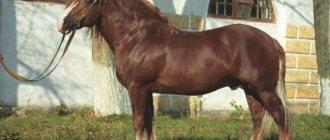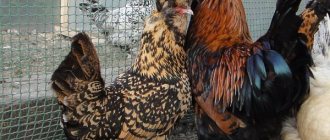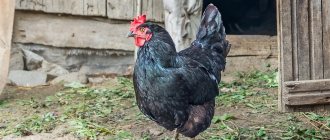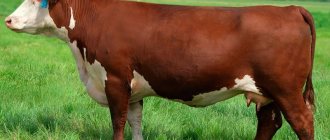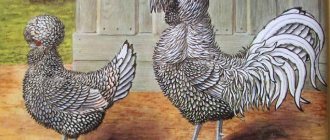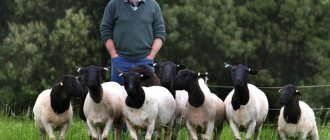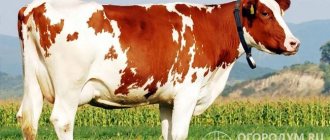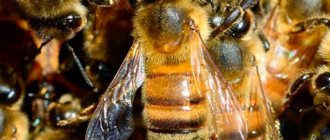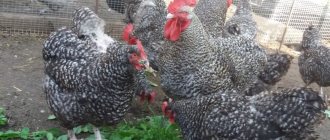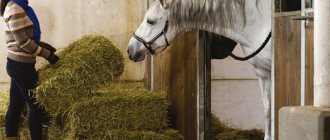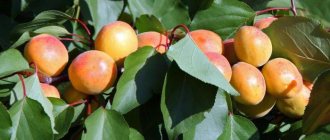Story
The Hanoverian breed has a long history; it was first mentioned in the 8th century, when it was used in the Battle of Poitiers, in which Charles Martell defeated the Saracens.
Hanoverian horses at this time were heavy warhorses, possibly the product of crossing local breeds with Spanish and Oriental horses. The breed owes its development to military conflicts, and in the Middle Ages it turned into a large, cob-type horse, capable of carrying a knight with his armor. This type of horse was in demand for centuries, but changes in military tactics required lighter horses. At this time, Hanoverian horses were still heavy, although they had become taller and more agile than cobs; in the 17th century there were three characteristic types of horses bred for military purposes: Hanoverian, Mecklenburg and Danish. But only in the 18th century did the breed gain its identity, when George I of the House of Hanover ascended the British throne in 1714. He spent most of his reign in Hanover; Over the next hundred years, Hanoverian horses were improved. Thoroughbred riding stallions were crossed with Hanoverian mares, and Cleveland bays were also used, which made it possible to obtain fairly heavy horses used in agricultural work.
George I founded the state stud farm in Celle in 1735. 14 stallions with Spanish blood were imported. By 1750 the number of stallions had increased to 50, of Holstein, East Prussian, Danish, Andalusian and Neapolitan origin. And by 1800 there were already 100 of them. Large universal riding and carriage horses, as well as horses for agriculture, were bred at the stud. The improvement of the Hanoverian breed continued with the infusion of Trakehner and purebred horse blood. In 1888, the studbook of the Hanoverian breed was founded. The result of the work was a wonderful sports horse, as we know the Hanoverian breed today. It is the most famous of all the mixed breeds.
Currently, the purity of the breed is monitored by the society of breeders of the Hanoverian breed. Approximately 150-160 stallions are kept at the Celle stud farm, where they are tested for endurance, performance, character and conformation over several months. Only after successfully passing the tests are stallions allowed for breeding.
The Hanoverian breed played an important role in the formation and improvement of other mixed breeds, in particular the Westphalian, Mecklenburg and Brandenburg.
- Zernebog, founder of the F and W lines of the Hanoverian breed (b. 1845)
- Jellachich, manufacturer of the Celle plant (born 1844)
Nuances of breeding
Today, the breeding of Hanoverian horses is under the jurisdiction of the Hanoverian Breeding Union, as far as Europe is concerned. In Russia, VNIIK is in charge of registering purebred foals and issuing breeding documents. The approaches to breeding of these organizations are at opposite poles.
VNIIK principle: from two purebred Hanoverian horses a purebred foal is born, which can be issued breeding documents. Even if the foal turns out to be very unsuccessful, he will receive his documents. Later, owners often breed in what a qualified breeder would call a breeding marriage and remove from breeding. Therefore, in Russia you can often buy a thoroughbred horse that is not suitable for any field of activity. And this applies not only to Hanoverian horses.
The policy of the Hanoverian Union is different. Hanoverians have an open stud book and these horses can be bred from any other breed, provided that the individual used has been licensed for use on Hanoverians. If the offspring meets the requirements, it is entered into the Stud Book as a Hanoverian horse. Stallions are usually used to inject fresh blood.
Interesting! Two Budyonnovsky stallions were licensed to join the Hanoverian breed.
Considering that German breeds are all related to each other and can cross with each other, a horse is often written not as the breed its parents had (as in Russia), but according to its place of birth. For example, Westphalian horses have the same stallion lines as Hanoverians.
The modern market requires a large, elegant horse with good movement and jumping ability. Infusions of external blood and strict selection are aimed at improving Hanoverian horses in this direction.
The headquarters of the Hanoverian Breeders' Union is located in Verdun. The main auction of Hanoverian horses is also held there. 900 heads of young Hanoverian breed are sold per year. The Union also conducts selection of breeding stock and licensing of stud stallions.
Exterior
Now the Hanoverian horse is quite massive, but at the same time has an athletic build. Her height reaches 175 centimeters. Representatives of the breed have a fairly long neck and well-formed, pronounced withers. The body is strong and deep with good muscles, the croup is also powerful, rounded and quite wide, the body is completed by a well-set tail. Their shoulders are elongated and oblique, rather large joints are clearly visible on their muscular legs, and their high elasticity is evident in movement.
Color can be:
- bay;
- dark bay;
- black;
- Red Hanovers are rare;
- White spots are allowed.
To complete the description, the natural flexibility and endurance of these stallions should be noted.
When selecting individuals for mating, a number of features are taken into account. They are tested for:
- endurance;
- performance;
- exterior.
Their nervous system is also tested; only balanced representatives of the breed are allowed to breed.
Obedience, good disposition, and energetic temperament are taken into account. If an animal does not pass at least one point, then it cannot be admitted to breeding work.
https://youtube.com/watch?v=lTnoku1rlpo
History of the Hanoverian horse breed
If you read a little history, you can trace the first appearance of the Hanoverians. This happened in the 8th century AD. e., - the breed appears in the description of the Battle of Poitiers. It was in this battle, using the ancestors of the Hanoverians as war horses, that Charles Martel was victorious over the Saracens. Breeders suggest that at that time the breed was obtained by crossing Spanish, Oriental and local breeds.
Further, the Hanoverians are mentioned in the Middle Ages. Then knights dressed in heavy armor fought on the battlefield, and it was this breed that was capable of carrying such a fighter. Later, fighting tactics underwent major reforms, and these stallions became too heavy and were replaced by lighter breeds. The revival of the breed took place many years later - in the 18th century. At that time, George I came to power in Great Britain (1735), and he became the founder of a stud farm located in the city of Hanover.
Initially, 14 purebred Spanish stallions lived there. The Hanoverian dynasty ruled for many more years, and each ruler promoted the import of horses. A variety of horses were imported:
- English;
- Neapolitan;
- Mecklenburg;
- Holstein;
- Andalusian stallions.
Hanoverians have long been classified as a draft breed.
Over the years, the factory developed and was replenished with new stallions. In 1750 there were about fifty individuals, and in 1800 there were already 100 horses. At that time, breeders sought to increase not only the number of livestock, but also its quality. Their main goal was to develop a universal horse that would be equally useful in war and in the field, so that it could be harnessed to a carriage or saddled.
The war with Napoleon caused great losses, when more than half of the individuals were destroyed. England immediately began to replenish the population. Young stallions were brought into the country and crossed with purebred riding horses to improve the breed. At that time, Hanoverians were divided into two types:
- noble, which are more graceful and were the result of crossing with Arabian and English stallions;
- The second type included rougher individuals; their breed was not so valued.
Already in 1850, there were 200 individuals of the Hanoverian breed at the stud farm. This growth was due to the fact that the first hippodrome appeared in Germany. Horses of this particular breed were tested there. But the opening of the hippodrome did not bring any benefit. Horse racing lasted only 13 years and was officially canceled in 1863.
For some time this breed was bred purposefully. This was between 1830 and 1889. And in 1888 their stud book was approved. Another 22 years later, the branding of breeding stallions was officially recognized. This was a period when the state completely controlled the work of breeders. In 1921, another stud farm appeared in the city of Hoopesrück. At this stud, only stallions were bred, and in Westerzell they were tested to see if they could act as sires. Not every individual was allowed to mate. They went through a rigorous selection process and had to meet the following criteria:
- temperament;
- type;
- exterior;
- origin;
- working qualities;
- examination by a veterinarian.
For all these points, the stallion must have an “excellent” rating, otherwise he was simply not allowed to breed.
The Second World War left a serious mark on the breed. Hanoverian horses were no longer used in the army and agriculture. At that time, equestrian sport was rapidly developing, and the Germans decided that it was better to send the Hanoverians there. But the Hanoverians of that time did not meet the requirements of equestrian competitions. They were too heavy and could not compete with purebred horses. Then the breeders made serious changes to the breed and developed modern Hanoverian horses. Now this is one of the best breeds of horses that can boast of excellent sports abilities.
Today this breed is in demand and boldly competes against the leaders of equestrian competitions. There are Hanoverians in Russia too. They are bred at a stud farm in Kaliningrad.
How did the famous Hanoverian breed appear?
The very first mentions of horses of this breed date back to Charles Martel and the Saracens. According to historians, his soldiers sat on the first Hanoverian horses. But those horses are not at all like modern representatives of the aristocratic breed.
These were heavy, clumsy war horses, capable of easily carrying a rider with heavy armor. The large hooves of the Hanoverians easily knocked down the enemy's foot soldiers and took them out of the battle for a long time.
Charles Martell on a Hanoverian horse. Battle with the Arabs
Over the years, powerful horses have changed. Just as the methods of conducting military operations changed. Over time, warriors abandoned heavy, bulky armor. They began to choose other methods of protection. And the horses remained too heavy to be used in the new conditions.
Gradually, the popularity of the breed began to decline. It was possible to regain the lost positions only in 1735. Then, in Celle, the Hanoverian prince, the future King of England George II, opened a large stud farm.
The first producers of the plant were breeding stallions, which were brought from Spain. Then the factory purchased English, Neapolitan and Andalusian horses.
On the pasture
The plant developed rapidly. Already in 1750, there were about 50 breeding stallions. And at the beginning of the 19th century, their number doubled. During this period, the first representatives of the breed familiar to modern connoisseurs appeared.
During the reign of Napoleon, horse breeding was stopped. And there are much fewer manufacturers. Then again we had to purchase stallions in England.
Amazing fact! The Marwar horse breed was also once almost on the verge of extinction. In the 1930s, the Indian government unexpectedly banned the export of horses from the country. Then, purely for economic reasons, it was unprofitable for producers to breed horses only in India. You will find details in the article - Marwari: horse breed.
During this period, two types of Hanoverian half-bred horses appeared. The first were distinguished by grace and nobility. The features of Arabian horses were clearly visible in their exterior. The second ones were rougher, but had incredible strength and endurance.
In the 19th century, Hanoverians were crossed with Arabian horses
When the number of horses in the Duchy of Hanover reached 200 horses, a racecourse was opened specifically for this breed. However, by order of the authorities it was soon closed.
In subsequent years, the breed was systematically improved and the population increased tirelessly. In 1888, the first stud book of breed representatives was created. It can still be found in reprinted form on the shelf of exclusive copies of books by those who are interested in horses.
State Book of Hanoverian Breeding Horses (Volume 2)
Over the next 20 years, Hanoverian breeding was controlled at the state level. The stallions went through a rigorous selection process. Only the brightest representatives of the breed were used for production. Selected horses were branded with the Latin “N”. It confirmed high qualities: calm disposition, good health and impeccable exterior.
After World War II, the breed began to be used exclusively in sporting events. But they still lack lightness and mobility. Arabian horses were used for this. The current Hanoverian half-bred is a noble horse with high sporting qualities.
Hanoverian stallion from Germany
Nutrition
The basis of a horse's diet is grass. It takes up about 80% of all food consumed by animals. In winter, give the horses hay. It improves peristalsis of the body.
Your horse's diet should include grass.
Hay is suitable for feeding:
- legume;
- cereal;
- meadow;
- steppe.
Cereals are considered the most optimal. It can be given in its pure form. Other types are best mixed with straw.
Straw for feeding
The feeding rate is approximately 2 kg for every 100 kg of weight.
Cereals must be given to horses
In addition, include grains in your horse's diet:
- barley;
- oats;
- corn;
- wheat;
- legumes;
- millet.
Grind the grain or flatten it after steaming it in boiling water. The entire daily norm is divided into three parts. Horses are barked in the morning, afternoon and evening.
Give roughage first, and after 30-40 minutes - grain. Also diversify your horses' diet with vegetables and fruits.
It is necessary to give horses licks
Approximate amount of feed per day
| Hay | 4-5 kg. |
| Cereals | 4-5 kg. |
| Bran | 1 kg. |
| Vegetables and fruits | 2-3 kg. |
Conditions of detention
In order to ensure a healthy and active lifestyle for horses, it is necessary to keep them in optimal conditions. Initially, keeping a horse may seem like a difficult task, but if you strictly follow all the instructions, recommendations, tips and rules, you will be able to cope with it
So, first of all, it is important to consider that the room where you plan to keep horses must be warm and dry. In addition, during the warm season, it must be continuously supplied with fresh and clean air. The stall should be covered with a special bedding, the layer of which should be in the range from 10 to 20 centimeters
You can use sawdust as such bedding, but you should take large sawdust and avoid small ones, as the latter can get clogged in the nostrils of Hanoverians. In addition, it is prohibited to use shavings, which are a by-product of furniture production, as bedding. The fact is that such waste contains a large number of various chemical impurities that can cause negative reactions in animals
The stall should be covered with a special bedding, the layer of which should be in the range from 10 to 20 centimeters. You can use sawdust as such bedding, but you should take large sawdust and avoid small ones, as the latter can get clogged in the nostrils of Hanoverians. In addition, it is prohibited to use shavings, which are a by-product of furniture production, as bedding. The fact is that such waste contains a large number of various chemical impurities that can cause negative reactions in animals.
It should also be taken into account that such litter must be updated regularly with a fairly high frequency - at least once a day. In addition, once every 30 days the bedding must be changed completely, getting rid of the old one, which will protect animals and workers from harmful microorganisms.
In the premises where horses are kept, there must be a feeder and water bowl. Animals must eat according to their schedule and diet, but access to water must be constant and unlimited. Remember to wash and clean water and food containers regularly. In addition, a specially designed salt holder will be a convenient device.
As for the diet of the Hanoverian horse itself, its basis should be grass. So, according to the calculations of veterinarians, as well as scientific zoologists, its share in the total food volume should be no less than 80%. Moreover, in the warm season it should be fresh and clean grass, but in winter you can use hay.
It is best to use cereal hay. It should be given to Hanoverians in its pure form. However, if this is not possible, then legume, meadow or steppe hay is also suitable for feeding horses. It is better to mix such food with straw. As for the required level of consumption, the general rule is that for every 100 kilograms of animal weight there should be approximately 2 kilograms of food
That is why it is so important to take an individual approach to compiling the diet of each individual individual.
However, grass, as we said above, only makes up 80% of the nutrition. The remaining 20% can be distributed among other products. So, your diet can include grains crushed and steamed in boiling water (barley, oats, corn, wheat, legumes, millet), as well as fruits and vegetables. Horses must be given special licks.
Among other things, hygiene is of great importance in the process of caring for Hanoverians. So, as the animal becomes dirty, it must be cleaned with a special brush in the direction of hair growth. You can also use a damp cloth.
After cleaning, the horse must be wiped dry. Hanoverians need to be brushed to avoid tangled hair. There are specially designed combs and massage gloves for combing the mane of horses, which can be purchased at zoological stores.
In addition, the horse needs to be bathed regularly. Bathing should be done using special detergents and a hose. However, make sure that the water pressure from the hose is not too intense. Otherwise, you will simply scare the animal. Take care of your hooves as well. They can be shod, but this is not necessary. Either way, don't forget to keep your hooves free of dirt.
Features of character and disposition
Hanoverian horses have a strong, persistent character. Before crossing, the character of the sires is tested. Only horses with a balanced temperament are allowed for breeding.
Hanoverian breed. Bay color
Maintenance and care
Caring for any pet is a lot of hassle. Keeping a horse will seriously hit your pocket and take a lot of time and effort. Only true lovers of this beautiful animal are capable of this.
Stable
In principle, you can solve all problems by renting a place in someone else’s stable. You can even hire a special person who will perform all animal care operations instead of the owner. However, this will deprive you of the pleasure of looking after and caring for a horse in your own stable, which is why wealthy people often set up a stable in their household.
Important elements in the room are:
- stall;
- feeders;
- drinking bowls;
- litter;
- climatic conditions (temperature, lighting, etc.).
The stall should be quite spacious, in the interior of the room, away from the main walls. Bedding is placed in it and there is free access to the feeder and drinker. The walls of the fence are made of boards. Each stall requires individual drinkers and feeders.
The drinking bowl can be either automatic or manual - in the first case, the water level in the drinking system is constantly maintained, in the second - water is brought in buckets or poured from hoses in the old fashioned way.
The feeder is arranged in the form of a tray into which food is poured. You can divide it into two compartments to pamper your pet with some variety of food. Trays are made of wood, plastic or galvanized iron.
It is best to lay the flooring Small sawdust can be accidentally inhaled by an animal, and waste from furniture production contains harmful chemicals. The initial layer is made 10 cm thick, and then every two days you need to add an additional portion - a bag will be enough.
Lighting can be natural or artificial. The required amount of daylight in a stable is calculated using a simple formula: the ratio of window area to floor area should be 1:10–1:12, in the southern regions - 1:12–1:15. Artificial illumination - 150–200 lux with even light.
Ventilation in the room is necessary, because the waste products of even such a noble animal have a persistent unpleasant odor. Exhaust ventilation will ensure its removal outside the stable.
Proper care will give the animal a healthy appearance, satiety and good health. In the wild, horses are completely unpretentious, but their domesticated relatives have their own maintenance requirements.
Manure and litter. Sewage must be removed from the stable daily. To do this, a rake and shovel are used to sift the litter and collect excrement. The litter itself is updated daily, every two months it is completely changed, and the room is cleaned and disinfected.
Feeders and drinkers. Pathogenic microorganisms may appear in these containers as the remaining feed and water rot and bloom. To prevent this from happening, equipment is cleaned daily and disinfected weekly with special solutions or at least a weak solution of potassium permanganate.
Wool. For the Hanoverian breed, coat care involves daily brushing. A horse that has been walking in an enclosure all day does not require any special procedures; it is lightly rubbed with a soft brush. If there were competitions that day or the pet was in the stall, the wool is carefully wiped with brushes and combs for half an hour.
Teeth. Every six months, horses undergo a preventive dental examination. If your pet begins to eat poorly and food does not bring him pleasure, it may well be that problems have arisen in the oral cavity. Teeth grinding with a rasp or removal is performed under general anesthesia by an experienced veterinarian.
Historical reference
This is a half-bred horse breed, obtained in 1735 by the then Hanoverian Prince George II, who later became King of England. The crossing of ordinary strong horses with Arabian and Trakehner horses, as well as with thoroughbred riding horses, led to the formation of a new high-quality breed.
Considering the not very noble origin of the source material, German breeders managed to develop an excellent breed capable of winning the most prestigious competitions.
Did you know? The coat of arms of the German state of Lower Saxony contains an image of a white horse, very similar to a representative of the Hanoverian breed. As it turned out, white Hanovers existed even before the date of their official introduction. Presumably, these animals were brought from Denmark.
Appearance and physique
The exterior of the breed suggests the excellent characteristics of an English thoroughbred horse.
The external characteristics of the Hanoverian horse are as follows:
- the head is medium with classic clear features, a straight nose and large expressive eyes;
- neck - long, muscular;
- shoulders - medium, developed;
- chest - vertically rectangular;
- withers - graceful, pronounced;
- body - muscular, powerful;
- legs - medium, developed;
- tail - thick, long;
- weight - under good conditions - up to 600 kg;
- height at withers - 160–170 cm;
- body length - slightly longer than the length at the withers;
- color - from black to gray, is uniform, allowing only small white spots.
Temperament and habits
Balance and calmness are the main indicators of the character of representatives of this breed. A calm attitude towards the surrounding situation makes Hanoverians excellent sports horses.
Important! For breeding, only those individuals are taken that have been tested by specialists and found to be calm, but with a strong character. These animals are persistent, hardy and patient at the same time, so they are easy to train.
Excellent motor qualities distinguish these horses during competitions
They show intelligence and impressiveness, which attracts the attention of the audience and deserves the favor of the judges
Usage
Representatives of the breed are widely used in equestrian sports and not without success. A gentle disposition and perseverance help in achieving the highest goals. Many Hanoverians became champions and medalists of the Olympics and World Championships.
These horses are good for dressage because they are obedient and even delve into the process of competition, demonstrate grace, and become artistic. With proper training and education, they can become one with the rider and captivate the public and the jury.
An even more promising equestrian sport for Hanoverian horses is show jumping. They respond well to the jockey’s commands, their physiological characteristics make it possible to overcome any obstacles, and they themselves enjoy this sport.
A ride on a Hannover also leaves an indelible impression. Many wealthy people own representatives of this breed for regular walks at their leisure. The horse's smooth ride and mannerisms allow you to enjoy the ride rather than waste energy and nerves on restraining zeal.
Did you know? Horses are very smart animals, capable of learning. Some of them can independently figure out how to open the doors of a stable or enclosure, and release the rest into the wild.
Advantages and disadvantages
- ]The advantages of the breed are clear:
- calm behavior;
- obedience;
- gracefulness;
- high learning ability;
- the emergence of sports passion;
- excellent external data.
The only disadvantages can be found in the impossibility of using it in the household despite all the maintenance costs. It definitely won’t be possible to make a rural “Savraska” or a draft horse out of it. And the cost of these horses is “biting” - you will need to shell out at least 3 thousand dollars for one individual.
We recommend reading more about horse equipment:
Origin of the Hanoverian horse
The ancestors of modern Hanoverians are considered to be horses of Eastern and Spanish origin, which crossed with mares that lived at that time in the territory of modern Germany. In the Middle Ages they were used by knights and took part in numerous battles.
The history of the Hanoverians began in the 18th century, when Duke George II of Saxony took the English throne . The ruler himself was born in the region of Hanover in Germany. He loved horses. By his order, a stud farm was founded there in 1724. The Duke purchased several dozen stallions of Spanish origin, Mecklenburg, Holstein, Andalusian, and later purebred horses.
On the territory of the Hanover factory, beautiful albino horses were bred, which were very popular among the nobility. These horses were used only for riding. They were not suitable for sledding, nor for working in rural areas. Over time, this breed degenerated due to genetic mutations.
Then it was decided to revive and modify the breed by crossing mares with purebred stallions from England. Half-blood crosses turned out to be successful. Already by the middle of the 18th century, there were more than 50 breeding stallions at the stud farm in Hanover. By 1800 the population had doubled.
During the Franco-Prussian War, the number of heads decreased. There was an active struggle to preserve the breed. Work on its revival continued at the end of the 19th century. During selection, it was possible to achieve the desired characteristics - the crossbreeds turned out to be large, strong, and hardy. They were ideally suited for harnessing and performing hard work in the fields, as well as for riding.
Attention! A stud book for the Hanoverian breed was established in 1888, and in 1910 mandatory branding of breeding stallions was introduced.
A turning point in the development of the breed
If in the 18th and 19th centuries Hanoverian horses were used as faithful assistants in agricultural work, then after the Second World War everything changed. Now mechanical engineering was actively developing, and horse labor was replaced by tractors and combines. In the 20th century, interest in equestrian sports increased, so the Germans decided to start breeding again and modify the Hanoverian horses, making them lighter and more playful.
The breed was improved by infusing fresh blood from English riding horses, as well as Arabian thoroughbreds and Trakehner horses. As a result, German breeders managed to create a truly unique breed of racehorses that can even compete with English riding horses.
History of the breed
The breed has come a long way in development before the exterior of its representatives became similar to modern Hanoverians. The first mention of them is found in books of the 8th century, describing the battle of the small French city of Poitiers, in which the leader of the Franks, Charles Martell, defeated invaders from the East - the Saracens.
Considering the equipment of the warriors of that time, it can be assumed that the Hanoverians were already large, hardy horses, capable of withstanding both a knight and his armor. Until the 17th century, this type of horse was most popular as the best means of transportation in battle and tournaments.
But times have changed. Heavy armor was replaced by light equipment. The requirements for horses have also changed. Now the warriors needed fast horses, not clumsy heavy trucks. Speed and agility became essential qualities of the horse.
But how good the Shire horse breed is can be seen here.
First of all, George I ordered 14 Spanish stallions for the stud, planning to cross them with representatives of local breeds. And in 1750, more than a hundred producers were involved in breeding work. To create a new breed, breeders used horses of Neapolitan, Holstein, and Andalusian origin. In 1888, the first selection book of Hanoverians appeared. Clearly described breeding standards for Hanoverian horses were formed, and the breed was officially recognized.
The result of the work was a large, muscular horse with a graceful exterior and a hardy constitution. The Zell plant continues to monitor the purity of the created breed. Today, about 150 stallions are kept at the stud farm. They undergo careful culling before they are allowed to be bred. Breeders from all over the world regularly bring mares to Zell for insemination and to produce purebred offspring.
When creating other, no less famous breeds, it was not without the infusion of Hanoverian blood. Using Hanoverian material, the Westphalian and Bradenburg breeds were created. It is also worth learning more about what a Percheron horse looks like and how it is raised.
On the video there is a description of the breed:
Hanoverian breed in Russia
In Russia, Hanoverian horses began to be bred in the 60s of the 20th century. In the stables of the former East Prussian stud farm Georgenburg, the Kaliningrad Stud Farm (now called Georgenburg) was organized. The stallions Duo, Valerik, Faust and Gunther and 66 mares were purchased in Germany. These horses were quite massive and bony, so to lighten the type, as well as to expand genetic diversity, thoroughbred Saddlebred, Trakehner and Arabian stallions were used. At the end of the 90s, interest in horses of German selection increased. But it is quite difficult to buy a purebred Hanoverian stallion without admixtures of other half-bred breeds. Thus, in addition to Hanoverian stallions, Hanoverian-Holstein and Holstein stallions are imported into Russia, the offspring of which are practically not allowed for breeding in the Hanoverian breed.
In addition to the equestrian Hanoverian horses, they are bred in the equestrian center (Kaliningrad region), at the Kirov State Farm Plant (Kirov region), in the Altai State Agrarian University (Barnaul), in JSC Akron (Novgorod region), in Elitar (Troitsky administrative district of Moscow) , in the Alfares sports complex (Tver region), in the Malanichev farm (Leningrad region). In addition, there are more than twenty farms containing from one to nine brood mares. Work with the Hanoverian breed in Russia is generally carried out according to the same principles as in Germany, but in relation to our conditions.
Hanoverian horse in mounted police
Due to its calm nature and precise execution of commands, the Hanoverian breed is used for mounted police in various countries. These horses are preferred by cavalrymen in England, France and Canada. The Royal British Horse Regiment consists of Hanoverian stallions.
Preparing for such a service takes some time for the riders. Usually horses aged from 3 to 5 years are recruited into the regiment, after which they are trained in this order:
- the horse is tamed by its future cavalryman;
- the animal is tested for resistance to stress;
- the horse and its owner undergo training at public events.
Such a service is quite difficult for both the horse and the person. The Hanover must be able to withstand loud noises and flashes, remain in place even in the event of immediate danger, and obey the rider unquestioningly. The Hanoverian breed copes well with all these requirements.
Also, as a rule, owners of this type of horse are chosen for photographs in British newspapers, because Hanoverians are a very beautiful breed.
Price
Every year, the Hanoverian Union holds auctions where you can freely purchase a thoroughbred horse. Animals are prepared in advance, they undergo special testing and training. In August, you can purchase foals and mares of three years of age here. At the auction you can buy a horse trained in show jumping at the age of 5-6 years for approximately 14 thousand euros. The price of a foal varies from 3 to 32 thousand.
Russian individuals have a cost significantly lower than German ones. On the domestic market, a good three-year-old stallion can be bought for 250–550 thousand rubles. Prices for individuals vary from 100 to 900 thousand rubles. The pedigree, exterior, age and training of the animal are important when assessing.
Hanoverian horses
general characteristics
Exterior
A distinctive feature of the Hanoverian horse breed is its exterior. It combines the characteristics of Trakens, Holsteins, and English purebreds. Strength and power. Strong limbs and a developed muscular system make these animals versatile.
The horse's build is rectangular, with an elongated body. You can mentally draw an oblique line along the length of the torso. And it will be greater than the height at the withers.
There are several types within the breed:
- heavy, intended for harness;
- Commander's, for horseback work.
The hook-nosed profile is the hallmark of the breed. The neck has a graceful curve and strong muscles. The head is medium in size.
The average height of an individual is 170 cm. Small deviations are allowed. Breed colors: red, gray, black, bay.
Plembrak is considered to be Isabella, Cremello, Dun, and Nightingale colors. Large white markings are also undesirable.
Two lines
There are two lines of the Hanoverian horse breed: dressage and show jumping.
The first is characterized by an “open shoulder” and an oblique shoulder blade. This allows the horse to throw his front legs forward and upward beautifully. These movements are very important for dressage. Because you have to perform complex elements. The back is long.
Jumping horses are characterized by a powerful croup and hind legs, which allow them to push off strongly from the ground at the moment of jumping. A short back is preferred.
Peculiarities
They prefer to take black horses for dressage. Since their suit looks advantageous on the field and conveys all the beauty of movements.
This sport is assessed subjectively. And therefore, each rider tries to show his partner in a favorable light. Grey, bay and red colors are not so spectacular.
For jumping lines, jump power matters. Only the cleanliness and time taken to complete the route are assessed.
Historical incident
If you carefully examine the coat of arms of Lower Saxony, you can see a white horse standing on its hind legs. The main problem was that the Hanoverian horse breed was not of the same color.
You can attribute everything to the conventions of heraldry symbols - descriptions of coats of arms and their history. But in ancient times, few people followed the pure breed. And a horse of this color appeared before the founding of the factory. In Memsen, foals were obtained from horses from Denmark.
Taking into account the use of a large number of different breeds, from time to time foals of forelock and light gray, almost white, appeared.
Every year this feature weakened. The whole problem was the active use of inbreeding. Due to the unusual color, the emphasis was only on him. As a result, a show line was formed. But she was not viable. And in the 20th century, white horses disappeared.
Cream color
Modern geneticists have developed tests that make it possible to accurately determine color. Previously, there were no such opportunities. And people relied on their vision. The end result was some funny stuff.
It can be assumed that the coat of arms depicts a cream horse. But due to the lack of such color, it was drawn white. A couple of decades before the appearance of the stud farm, King George II brought unusual animals. People called them the Royal Hanoverians.
Only meager descriptions have survived to this day. The body of the horses was light (yellowish or like ivory). And the mane and tail are yellowish-brown. Such stallions and mares did not last long.
It was expensive to maintain them, and they often got sick. In modern realities, representatives of the breed do not have such a color.
Character and behavior
The Hanoverian horse is calm. It is difficult to unbalance her.
Since the breed was originally bred for cavalry, qualities were important: courage, perseverance, hardness. Refusal to go somewhere or change gait will end in war with the death of the rider. Therefore, character selection was strictly introduced.
The character of Hanoverians will allow them to be used in equestrian sports. Beautiful and powerful gaits, good intelligence and focus on working with people make the breed popular.
Thanks to their good nature, these horses become excellent partners for children. You don’t have to be afraid that a wayward horse will throw them off or deliberately hit them with a hoof. They are excellent teachers for beginning riders.
Advantages
The advantage of the breed is that it is focused on working with humans, this distinguishes it from other breeds. This is inherent in the animal at the genetic level. The horse will not rush somewhere indiscriminately, because it has a calm, balanced character. The breed, according to people's reviews, is very suitable for show jumping.
Another advantage of the breed is its average height. Even a heavy and tall person looks very harmonious on her.
This horse is suitable for both experienced horse breeders and beginners who do not have much experience. An important characteristic is the pricing policy for this breed. The cost of horses is quite low, unlike other breeds (from 50 thousand rubles).
Although it is believed that horses are not capable of becoming attached to people, owners note the devotion on the part of the Hanoverians. It is good to buy such an animal for a child or teenager, since horses have a soft and quite friendly character.
Chilean
The Chilean horse is native to South America. This is a fairly ancient breed, coming to Chile back in 1536 with Diego Almagro (Spanish conquistador). This is how the Chilean horse breed appeared.
The first breeder of the breed was the clergyman Rodrigo Gonzalez de Marmolejo in 1544. And the best horses were exported across America and even further.
Due to the fact that the country is quite isolated from the outside world by deserts, ocean, glaciers and mountains, the breed developed pure, which contributed to the absence of admixture of other genes. The original purpose of the horse was military purposes, but it was also bred for household use, usually for working with livestock. This became the reason for preserving the animal from the advancing technological progress and replacing everything.
The horse is small in size, weighing about 300 kg. The Chilean horse has thick hair, a mane and a tail. The animal has developed muscles and strong bones. There are different colors of horses, with the exception of white color. Horses are characterized by a calm disposition, increased resistance to diseases, and rapid recovery from injuries or illnesses.
Appearance and characteristics of the horse
The exterior of Hanoverian horses has a massive appearance, but the structure of the body is harmonious. These are horses with a pronounced athletic appearance. The height of Hanoverians at the withers is more than 1.5 m. The animals’ neck is long, with well-defined withers.
The horse's body has developed muscles and extends into a strong croup. The horse's tail is set high. Another feature of the breed is the prominent joints on its long, muscular legs. The horse's hooves are quite high, with a strong horn plate. With a properly selected diet and a large number of movements, the horse’s body becomes sculpted, and the animal quickly builds up its muscles. Hanoverian stallions are very flexible, their movements are smooth and harmonious. The breed performs well in dressage.
The horse's head is sculptured with a straight, slightly sloping nose. The eyes are set wide apart and their color is predominantly brown. The animal's nostrils are wide.
The color of horses can vary, but the characteristic coat colors are black and bay. Reddish individuals are extremely rare. White spots on the nose are allowed, but purebred breeds are usually solid in color.
The Hanoverian horse breed is distinguished by its endurance and flexibility. Due to their physical qualities, this type of horse is very often used in sporting events. This breed has many achievements and medals to its name.
Before breeding, horses undergo careful selection. Only those animals whose exterior meets all standards are allowed to mate. In addition to appearance, the strength, endurance and character of the animal are also tested. Not least important is the characteristic of stress resistance. This quality is one of the defining characteristics of this breed. A shy horse is not allowed to mate.
A mandatory feature of a purebred Hanoverian horse is a brand in the shape of the letter “H.” The brand represents two horse heads and is placed on the left side of the animal in the first year of life.
The horse's exterior is considered exemplary and is often used for photos on the covers of horse breeding magazines.
Signs and character of the horse
Horses of the Hanoverian breed have an ideal exterior. This is an impressive and noble type of horse with easy and free movements.
Such horses predominantly have a medium-sized head with large bulging eyes, wide nostrils and erect ears. Their neck is graceful and long. The chest is wide and the back is quite muscular. Individuals of this breed have proportional and long legs, as well as well-set and elastic hocks, and short pasterns. Their movements are direct and energetic.
Historical curiosity
The coat of arms of Lower Saxony depicts a white horse rearing up. There would be nothing original in this: heraldry is a relative thing, and among the Hanoverians there are gray horses. But it turned out that white Hanovers actually existed.
At that time, the concept of the breed was very conventional, and white Hanovers originated in Lower Saxony even before the founding of the plant in Celle. They began to be bred in the first half of the 30s of the 18th century in Memsen. Where these horses were brought from remains unclear. What is known is that some horses came from Denmark. Contemporary descriptions of individuals of this population vary. Most cases mention dark spots in foals. Since the horses were collected from everywhere, there is an assumption that there were individuals with a dominant white color and small-spotted forelock. The population of white "Hanoverans" lived only 160 years. With each generation, the vitality of the animals decreased. Inbreeding, practiced for many generations, added to the problems. There was no selection of horses based on performance; the emphasis was on color. Ultimately, the white Hanover population suffered the same fate as all show lines that emphasized one extreme difference. In the second half of the 90s of the 19th century, it ceased to exist.
Achievements in sports
If we are already talking about the Hanoverian look, then here it is simply necessary to mention their sporting achievements. They were first heard of at the beginning of the 20th century, when Pepita was able to win about 9 thousand Reichsmarks. A little later, a horse named Draufanger managed to bring gold at the Olympics. And this was just the beginning.
They started talking seriously about the ideality of the Hanoverians only after 1964. This year, the German team was again able to win gold medals at the Olympics. This success continued in other countries.
Hannover tops the FEI rankings. In addition, these amazing horses made the following names of athletes recognizable: Markus Ehning, Nissan Anthony, and Ludger Berbaum. Therefore, the Hanoverians really deserve only greatness and praise.
Modern animal exterior
Nowadays, the Hanoverian breed is a set of simply ideal qualities. The appearance has been brought to the required level. If you want to understand one hundred percent what a real Hannover looks like, then it’s best to look at the photo. Of course, photos do not convey all the power and beauty of the animal, but if there is no opportunity to see it live, then high-quality photographs will do.
These horses are distinguished by well-developed muscles, solid limbs and a large body. In addition, the main distinguishing feature of the breed is its specific profile. The shoulders are slightly sloping, which also has a good effect on their movement.
Hanoverians also have a powerful back and a well-shaped croup. It is all these characteristics that enable animals to make powerful pushes during jumping and win all competitions without any problems.
Peculiarities
The modern Hanoverian is more refined and lighter than his ancestors. The animals have a good temperament. Like other German horses, Hanoverians receive a license only after veterinary certification. After this, you must pass riding tests.
When choosing a pet, it is important to pay attention to several features. Stallions of the Hanoverian breed must have pronounced masculine behavior, and females must have feminine behavior.
The body must fit into a rectangle. It is desirable that the horse has expressive eyes and a noble head with a well-positioned neck
Attention should be paid to the pasterns of the four legs and hooves
The gait of purebred Hanoverians is smooth, all limbs move straight, without slowing down, accelerating or hobbling. The beat is tracked from the rear and moves into a reverse swing. Leg movements are light and energetic. A good Hanoverian horse has a wide stride. Freedom of movement of the shoulders, hind legs and flexibility of the back are important.
Individuals of the Hanoverian horse breed undergo strict control during selection. Breeding stallions must pass a 100-day performance test, with 1/5 of the test assessing temperament and desire to work. The character and reliability of animals are valued as well as conformation and smooth movement. The Hanoverians are assessed on the basis of temperament, endurance, correct movement and jumping. Also, only individuals with a balanced character are allowed for breeding.
Speaking about the breed, one cannot fail to mention their sporting successes. The Hanoverians became famous a century ago, when a horse named Pepita won almost 10,000 Reichsmarks and was considered the best among eventing horses in Germany. The stallion Draufanger brought his country Olympic dressage gold in 1928. The Hanoverians made people talk about themselves seriously after the 1964 Olympics, when the German team again won gold. These achievements continue to this day, and the horses have made several professional jockeys famous throughout the world.
Modern use
Hanoverian horse breed
The Hanoverian horse breed is used in equestrian sports. She has proven herself in dressage and show jumping. The breed is among the top three in the mentioned sports areas. Strong legs and a shifted center of gravity help animals overcome obstacles easily.
Attention! Representatives of the Hanoverian breed have repeatedly become gold medalists at the Olympic Games, for example in 1928 and 1964.
In addition to sport, stately horses are used for horse riding training. Beginners feel comfortable working with such horses, their movements are light and smooth, and the animals themselves are docile and good-natured. Hanover is ideal for horseback riding and hippotherapy.
German breeders put a lot of effort into creating and preserving this horse breed. Now they can be proud of the result - Hanoverian horses are considered one of the best in the world in equestrian sports due to their agility, endurance, strength and beauty.
Description of the breed
Germany is considered the birthplace of such horses, and also the country in which the Hanoverian breed was bred. The horses have a very characteristic appearance - their color is uniform (in brown shades) with small spots and splashes of white. The height of the horse at the withers does not exceed 175 centimeters. The minimum value of this indicator is 160 centimeters.
The main purpose of horses is sport. Hanoverians participate in almost all sporting competitions, which is explained by the distinctive characteristics of the animal: power, mobility and agility.
An untrained eye can easily confuse the Hanoverian breed with a purebred English horse. This similarity is explained by the gracefulness and nobility of the movements of the Hanoverian, as well as the stature of the horse. The body of the animal has a large number of muscles, and the croup is quite powerful (including in terms of its dimensions). Horses have a rather long neck and a wide chest. The oblique line of the shoulders gives the Hanoverian a special nobility.
As for the legs, it is important to note that they have rather short metacarpus, but at the same time quite powerful and developed muscles. Thanks to this structure, the animal has a high level of endurance and is able to withstand heavy loads.
The joints of the Hanover's limbs are quite pronounced, which ensures elasticity and smooth movements. The hooves are covered with a dense horny layer. The animal has a medium-sized head, on which there are wide nostrils and large, expressive eyes. The profile of the muzzle is straight.
There are several colors of the Hanoverian breed. Two of them are considered the most popular, namely bay and black. However, the variety doesn't end there. You can also find gray and red colors.
